Let’s face facts. Technology is not everybody’s cup of tea and is somewhat intimidating to some of us. Emergency preparedness is a hobby to many of us, meaning that this is not how most of us make our living. Hobbies are something we do to relax and unwind after work or weekends and we like our hobbies to be fun and convenient.
The good news is that getting started with renewable energy has never been as simple, convenient or fun as it is today.
But make no mistake, if you are into emergency preparedness, you know that prepping and traveling the path of self-reliance is the very definition of do-it-yourself.
Start Small
Even the most epic of journeys begin with a single step. Just as you go about learning to shoot or garden or backpack, start small when you prepare your energy independence.
Start with the basics, but start now! Whether you rate yourself as an electrical engineer or a novice, admitting and embracing what you do not yet know is the first step to learning. From there, you will naturally begin to ask the right questions and truly learn.
A Simple Path
A simple path to energy independence for most folks is to start with powering small, portable, USB consumer electronics.
Then move up to recharging and maintaining small batteries like AA and AAA. From there, work up to a more comprehensive solar solution.
By this point, most people find they already understand the basics of renewable energy well enough to choose a generator to add to make a simply scale them up to the size of trailer, cabin or home.
Once you understand the basics with solar, you can apply what you know to wind, thermal, fossil fuels, steam, micro-hydro, geothermal or anything else and add them to your energy solution.
You will continue to learn all along the way, but each step builds upon the last. Just take it a little at a time. Unfortunately, I cannot squeeze all this into one or two articles, but I can show you the way and get you started on the path to energy independence. Getting there is a process as opposed to an event.
You cannot simply purchase self-reliance. You must learn it. Skills trump gear because being trumps having.
Don’t Over-plan
A word to the wise. Sometimes people tend to over-plan their emergency preparedness in an effort to budget or economize. For most people, it is more important to overcome the inertia of getting rolling than create a detailed roadmap from beginning to end right from the get go. This usually ends in too much planning and not enough doing.
Do not worry about planning your purchases in great detail from beginning to end because the path I have laid out starts off with lower cost purchases and works up to the more expensive ones. By the time you get to them, you will know a lot more than you do now.
If you try to for too detailed a plan through to the end right from the start, most of you will end up trashing your earlier plans and doubling your time planning. And that’s because you will choose different products later on than you would now since technology is always improving. Most of you will understand the features better down the road so you will probably choose different features anyway.
USB
For most of us, the most meaningful place to start is by powering a useful tools most of us know and use every day: battery powered consumer electronics charged through USB ports such smart phones.
Smartphones are not the only things charged via USB, MiniUSB or MicroUSB, but they are something most people can relate to.
The primary difference between these ports (at this stage) is the size and shape of the connector. They can all provide power and all manner of devices are being adapted to accept power via USB and store that power in internal batteries.
Proprietary batteries, especially ones not meant to be user-replaceable used to be something to avoid like the plague. With the advent of Li-Ion battery technology, they can be recharged thousands of times and are becoming more practical.
Still, devices you can buy extra batteries or expanded capacity for are a plus if you would like the device to continue working for a decade or more. You can now find pretty much any small consumer electronic device powered by USB. The primary benefits of charging devices via USB are standardization and convenience.
To name just a few, USB devices include:
- Lighting including LED Flashlights, Headlamps, Tactical Lights & Lanterns
- Smart Phones now have many aps and integrated component that will still be useful even if Internet connectivity is unavailable, but be conscious of what will and will not work without internet access. Survival applications of smartphones include accessing enormous libraries of locally-stored information via book readers and .PDF readers, ballistic calculators for precision long-range shooting, cameras, video cameras, note taking, MP3 Players, audio recorders, nearly anything you can think of and likely a few things you have not yet considered are readily obtainable.
- GoTenna is capable of sending encrypted, self-destructing text messaging via radio with range about like a GMRS radio. This means the ability to send secure short-range communications to other users using your cell phone even if the cell grid is completely down. This will be huge for survivalists and preppers. Many other more mundane, but still very useful radio technology that can be recharged very conveniently using USB is also available.
- UV Water Purification with SteriPEN
- eBook Readers like Kindle and kin
- Small Fans
- Personal Locator Beacons or PLB’s and GPS’s. Some of these can be recharged by USB and some of them (like the DeLorme Explorer) can send email and text messages via satellite in areas without cell coverage or where the cell grid is down, for a small monthly fee. Earlier devices could only send preprogrammed messages such as “SOS” or “I’m OK” along with your GPS coordinates.
Your choice was between that and an expensive satellite phone plan. Now you can create messages on your phone and send them up to satellites through the Explorer containing messages you write on the fly, such as, “The expedition is going as planned, but Paulo dunked the TP again, so we could use some more. We also need antifungal cream, benzoin tincture and another raft patch kit at the next resupply point…
P.S. No fish so we’ve been eating snakes and monkeys and would kill for some more hexamine, Mountain House and a little chocolate. That is much better than being forced to choose “We’re OK” or no communications at all over “SOS”, which would trigger search and rescue.
Small Batteries
Once you have the ability to charge USB devices, add the ability to charge and maintain small batteries such as AA, AAA, D, 9v and CR-123A batteries. To do this you’ll need some quality rechargeable batteries, and a good charger or two. I strongly recommend that preppers invest in quality batteries and chargers that have auto-diagnostic and battery maintenance capability. It will save you money in the long run. I’ll get you pointed in the right direction, so read the following recommendations.
Quality NiMH batteries such as Panasonic eneloop are rated for 2100 charge cycles and the brand has maintained 5 star ratings on Amazon for year and years.
This very unusual for consumer electronics as they are normally prone to generous helpings of end-user error that eventually lowers ratings of even the highest quality products, so buy with confidence.
There are plenty of other companies trying get in on the act though. Apple is even taken a stab at it now, so if you stand in line to turn over your privacy and money every time they release a new product, you’re in luck.
Most folks buy mostly AA and AAA rechargeable batteries and use spacers to use the smaller cells in anything that takes less-common C and D cells in order to simplify logistics.
Li-Ion batteries have also made their way onto the rechargeable scene but are not yet cost-effective for most applications other than proprietary and special high-output cells for high performance flashlights.
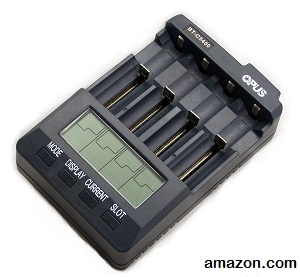
Most preppers would do well to start with a Universal Battery Charger/Analyzer/Tester.
You can find a quality model that will charge Ni-MH, Ni-Cd and Li-ion starting at about $50.
Like anything else, some models are much better than others. Some features to consider when choosing a battery charger are:
- Power input. Can you use it with both 12v DC and 120 AC?
- What sizes of batteries do you use?
- Intelligent auto cutoff charge function protects cells from overcharging.
- Does it need to be portable or will it never leaver a wall socket?
- Does it have faulty cell detection?
- Does it monitored each cell individually or in banks? This aids in finding a faulty cell.
- Does it have selectable charging programs with adjustable charging currents? The more current you charge with, the hotter the battery gets during charging and this shortens the life of the cell so it’s better to trickle charge batteries if you have the time.
- Do you want to also have USB Ports? Universal USB ports can detect and switch to the amperage a USB product was designed to be charged with. USB port ports were all 5v DC at 1 amp. Then power-hungry Apple products appeared designed for 2.1 amps. If you charge a mixture of devices, universal USB charging simplifies this for you so you do not have make sure that 2.1 amp products and 1 amp products plugged into ports that output the correct amperage for them.
- Does it detect overheating?
- Does the LCD display data for each cell independently or will it force you cycle through multiple screens to read it?
- How is the product rating and how many people have purchased it and rated it?
- What is your budget relative to your needs?
- What is the charger’s battery capacity limit?
- Can it condition and maintain cells? This can sometimes revive cells that test faulty, which is important on long-term.
Considering these facts, there is one advice to take into account: make a reasonable investment in your energy independence.
This article has been written by Cache Valley Prepper for Survivopedia.



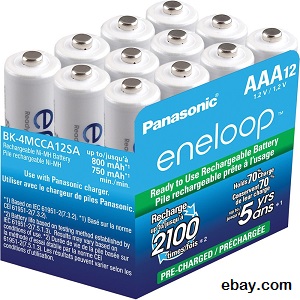
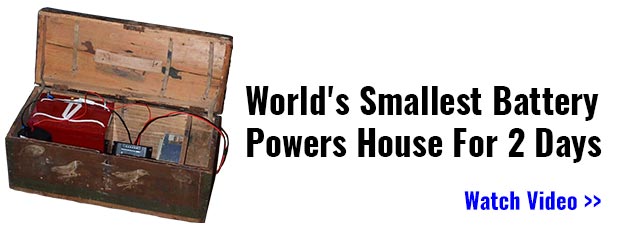

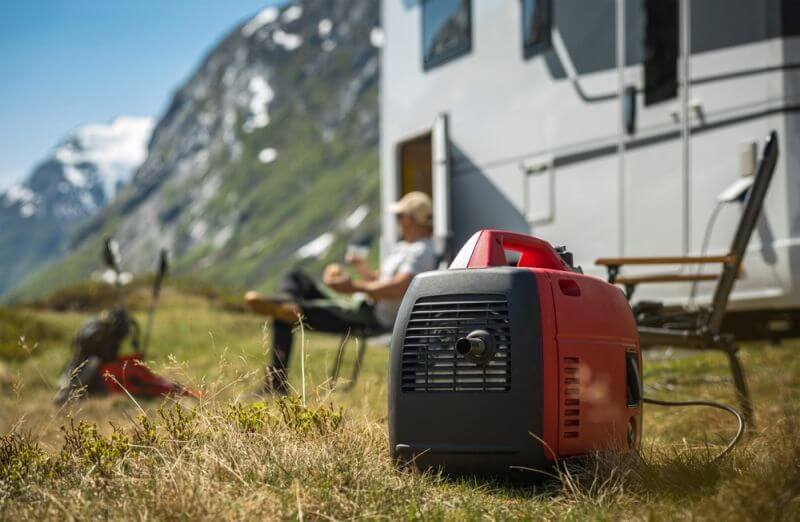

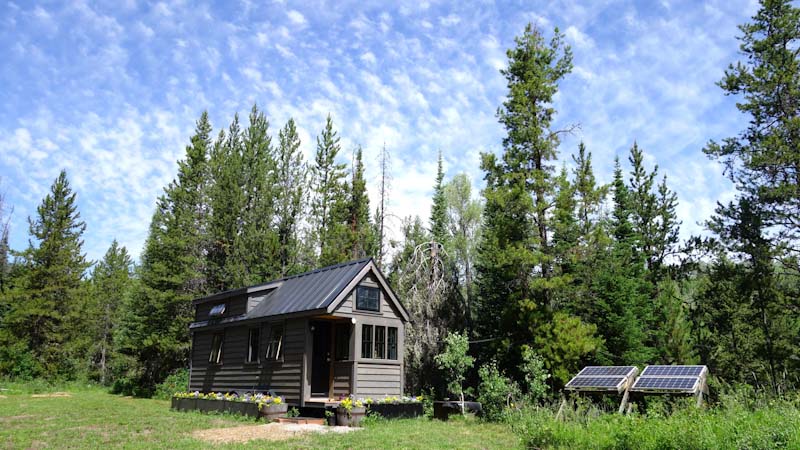

Doug Nicholson | March 20, 2015
|
One point to add about GoTenna. Both the sending and receiving parties must have the GoTenna, in addition to their cell phones, for the system to work.
EddieW | March 20, 2015
|
You keep refering to USB for a charger, if the grid is down, USB will be gone to!
I bought a solar battery charger, and some AA, AAA and a D Nicad battery. I want to get more as finances allow! The clerk recommended NOT to charge them until I’m ready to use them.
Ronpurcell | March 20, 2015
|
Regarding NiCd batteries, the clerk is right. NiCds should only be charged right before use, and discharged completely in use before recharging. NiCds are not amenable to being left on a charger as that greatly shortens their service life, yet that is how we need to use a standby battery. Therefore this make NiCds impractical for emergency standby applications, which normally use sealed lead-acid, Li Ion or NiMH batteries which can be left on chargers.
James P. | March 20, 2015
|
I have 4 solar battery chargers. One I use on an as needed basis (c cell for a radio). The others are in reserve. I have a large number of AAA and AA batteries for flashlights, the D batteries are for interior lighting. There are various plug ins for other rechargeable devices.
Rose | March 23, 2015
|
In a grid down, foul weather,or other senerio, at first I’ll be living/sleeping in my basement. I wonder why fiber optics isn’t talked about for giving some light in areas with no window light? Someone like me who is all thumbs, who tries but is forced to give up on these diy projects should be able to set up these. No batteries or chargers to wear out or fail, as long as there is light at the other end these should glow, thus extending the life & usage of any batteries you might still possess.
Pingback:Using Auto Batteries For Off Grid Energy Storage | The Prepper Dome | April 13, 2015
|
Pingback:Using Auto Batteries For Off Grid Energy Storage | Survival skills, survival guns, survival guide | April 20, 2015
|
Pingback:Building Energy Stockpile: Make The Sun Work For You | Survival skills, survival guns, survival guide | July 10, 2015
|
Pingback:Building Your Energy Stockpile: Make The Sun Work For Youdisasterdefense.usdisasterdefense.us | disasterdefense.us | July 10, 2015
|
Pingback:Building Your Energy Stockpile: Make The Sun Work For You | July 15, 2015
|
Pingback:Why Preppers Need To Know About Oxygen Concentrators | Prepper's Survival Homestead | February 24, 2016
|
Pingback:Why Preppers Need To Know About Oxygen Concentrators | Family Survival Headlines | February 24, 2016
|
Pingback:How To Start Building A Flashlight From Scrap | Survivopedia | April 15, 2016
|
Pingback:How To Start Building A Flashlight From Scrap | Prepper's Survival Homestead | April 15, 2016
|
Pingback:How To Start Building A Flashlight From Scrap | | disasterdefense.us | April 16, 2016
|
Pingback:Why Preppers Need To Know About Oxygen Concentrators – Prepper Dome | July 17, 2016
|